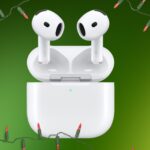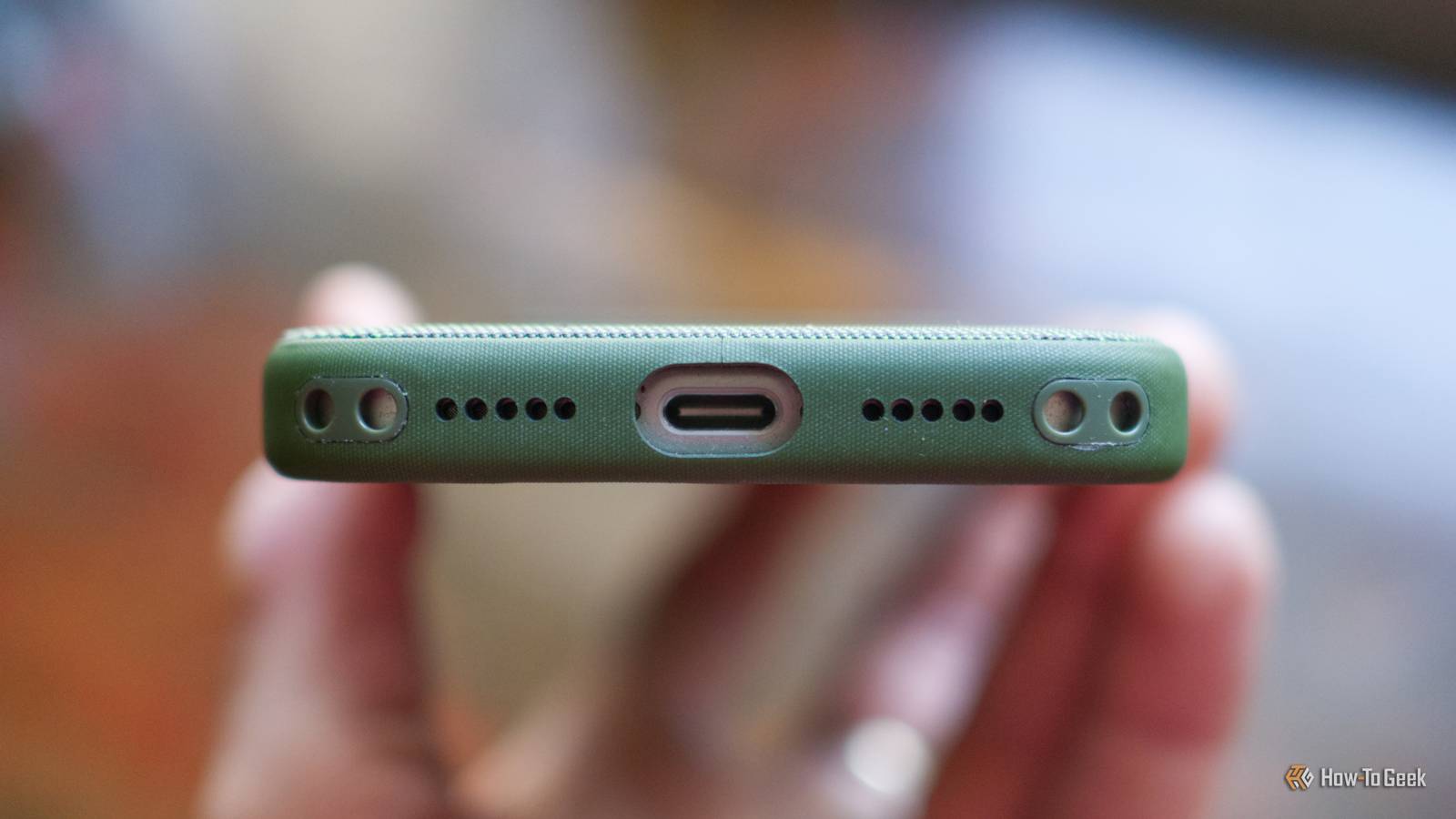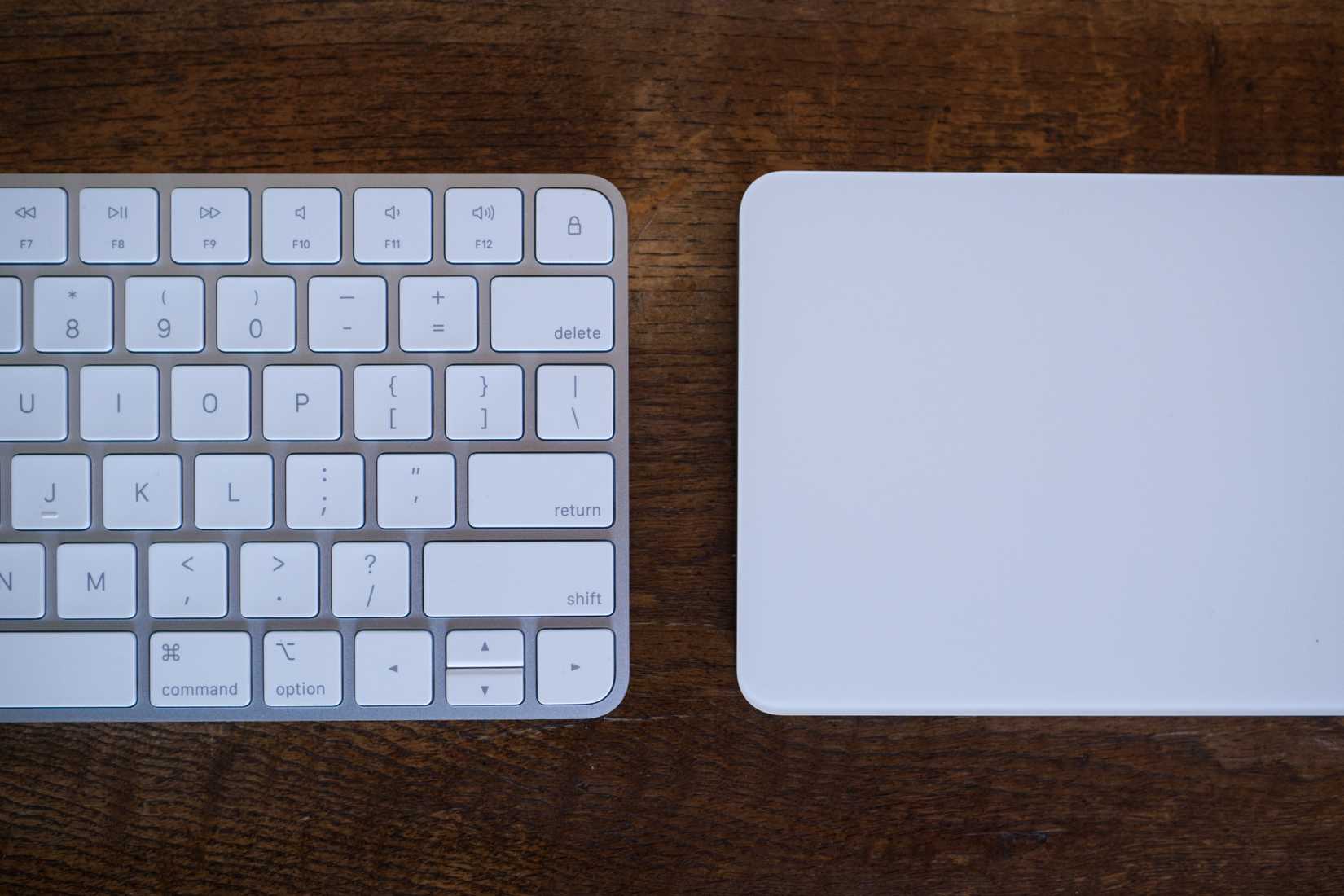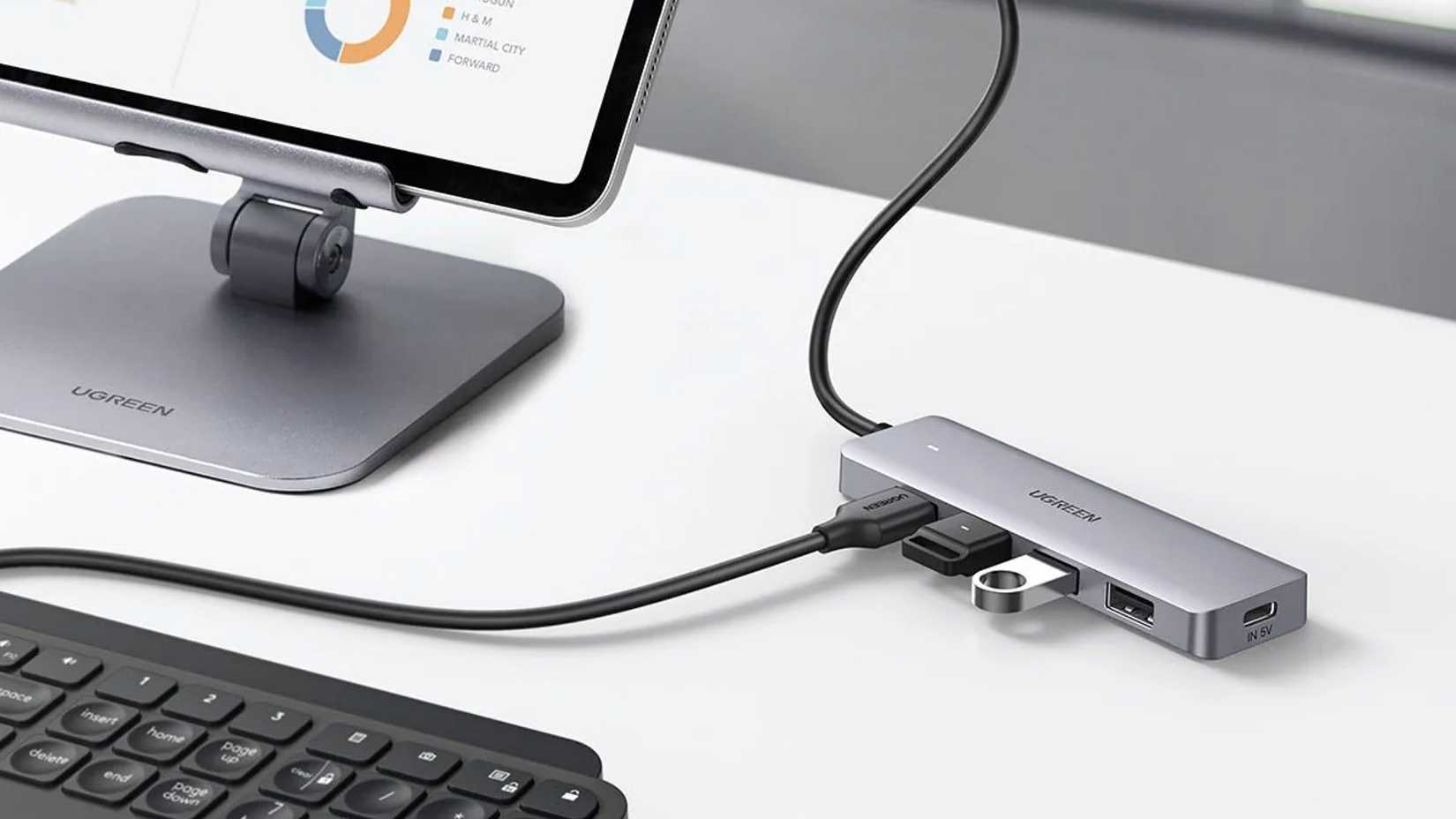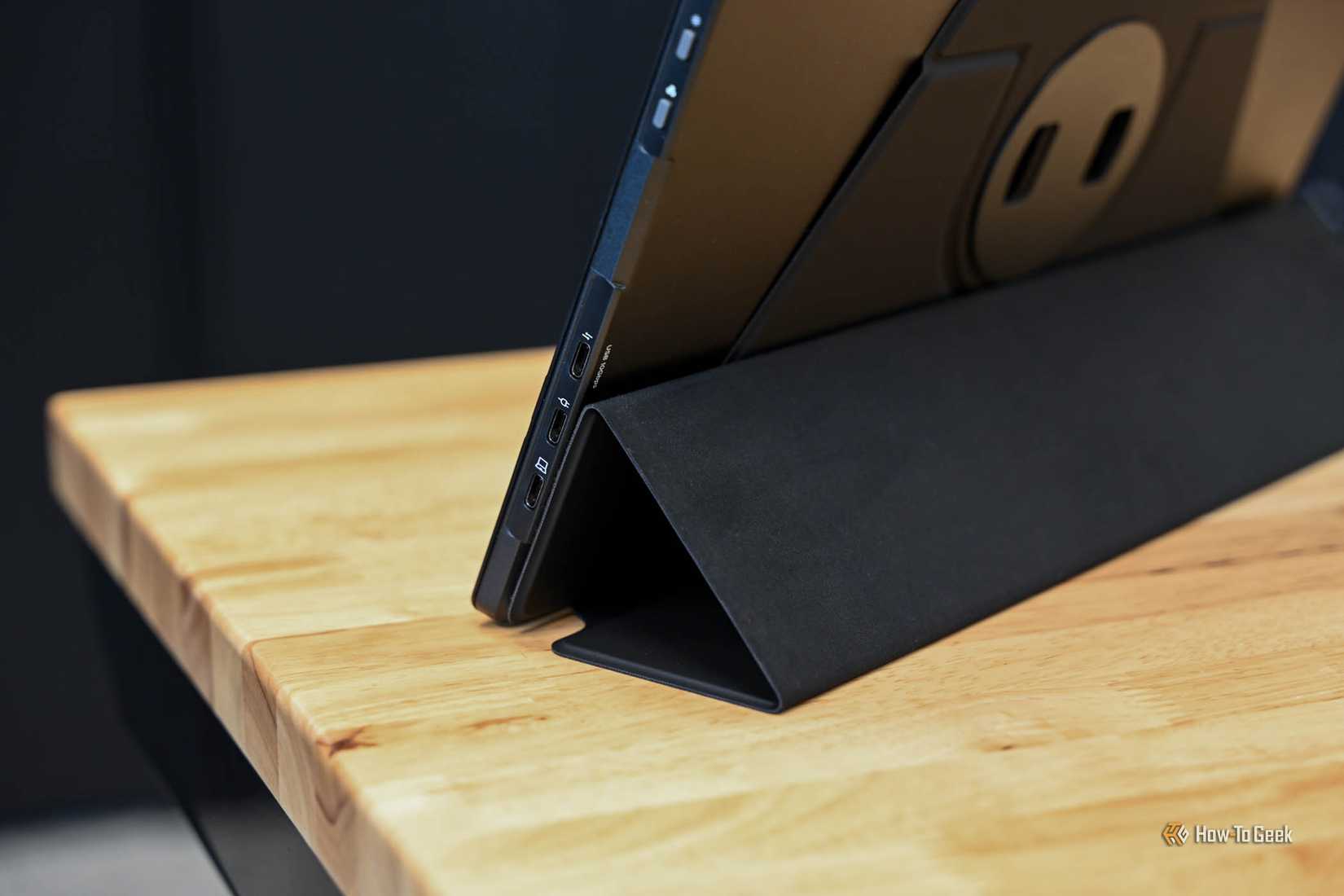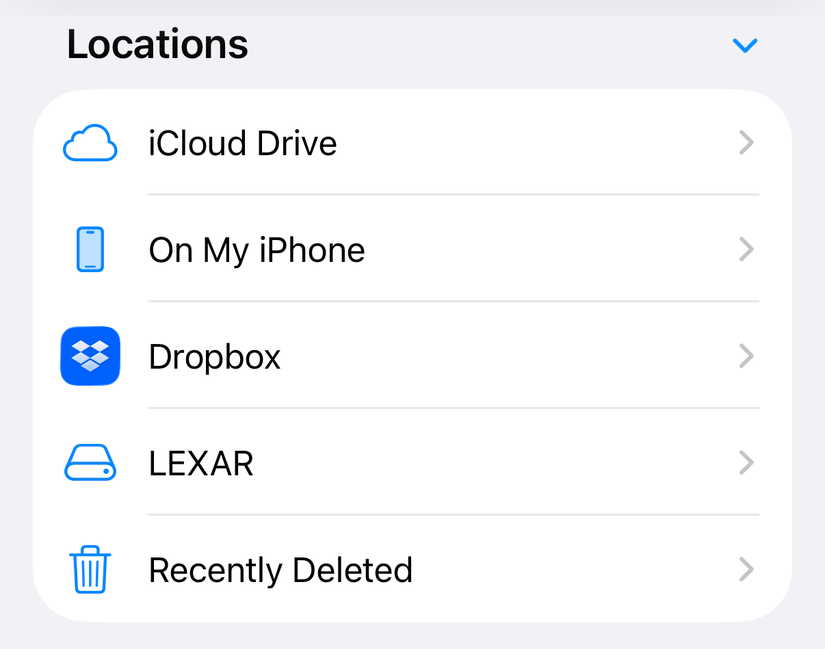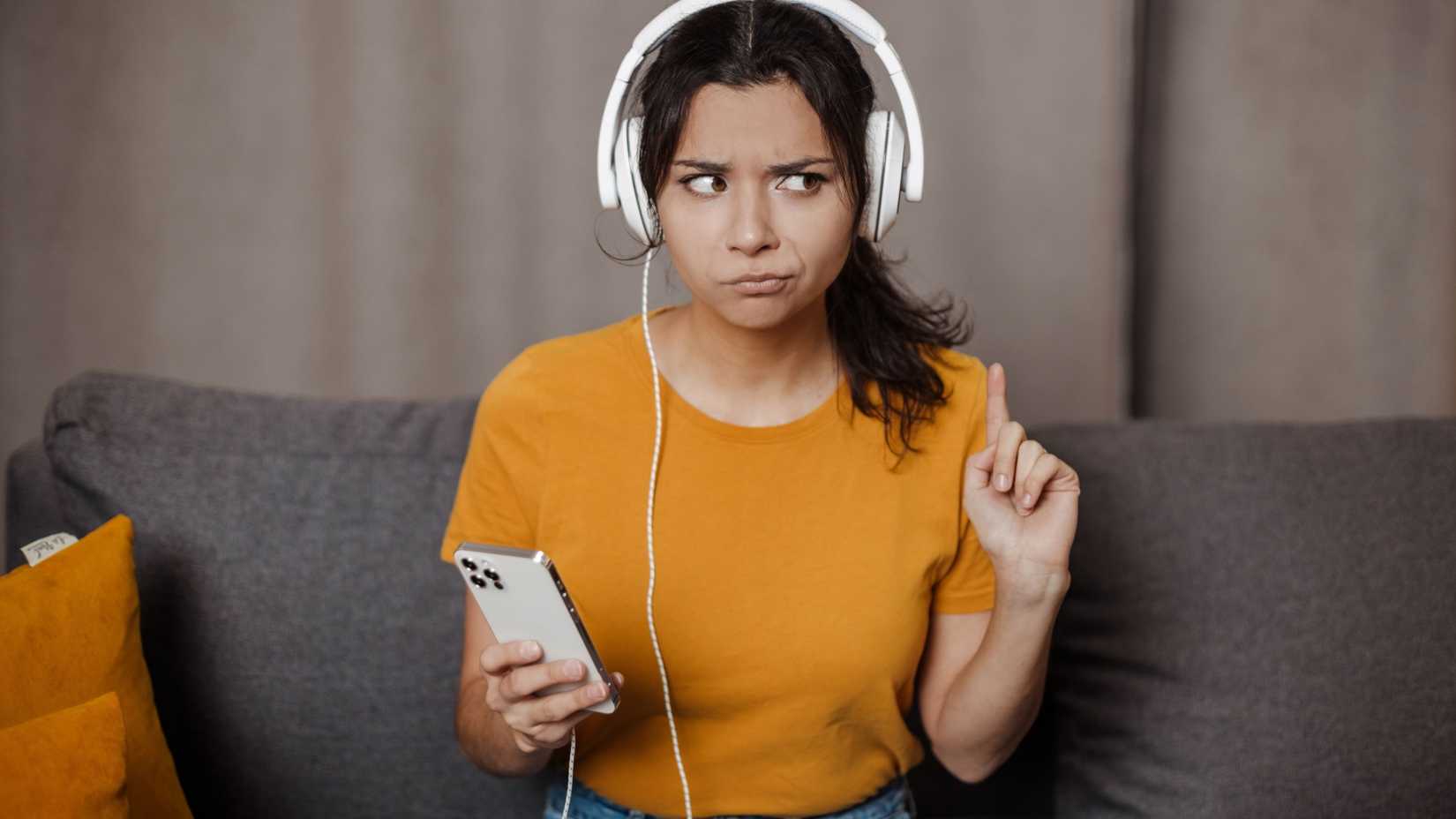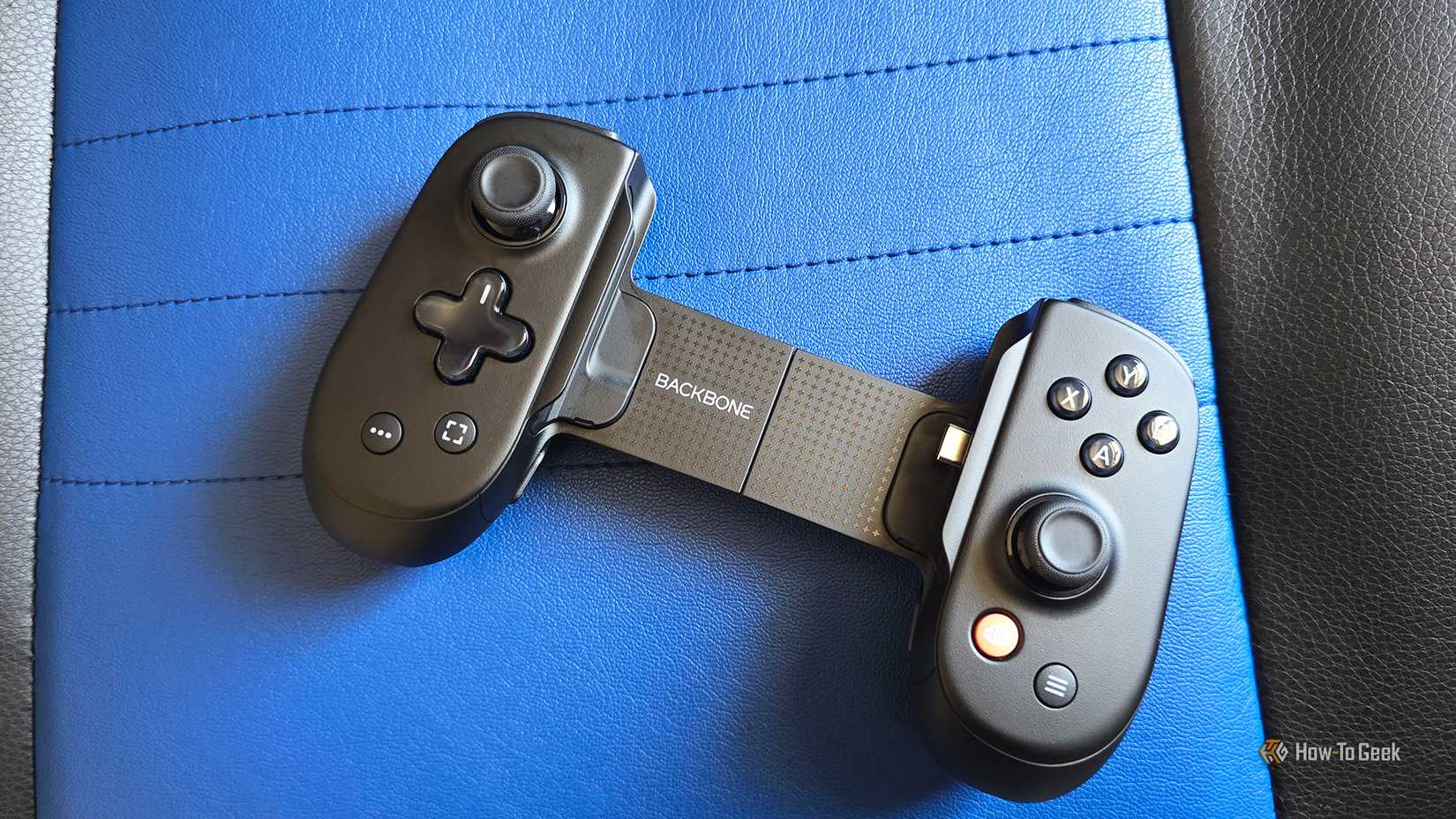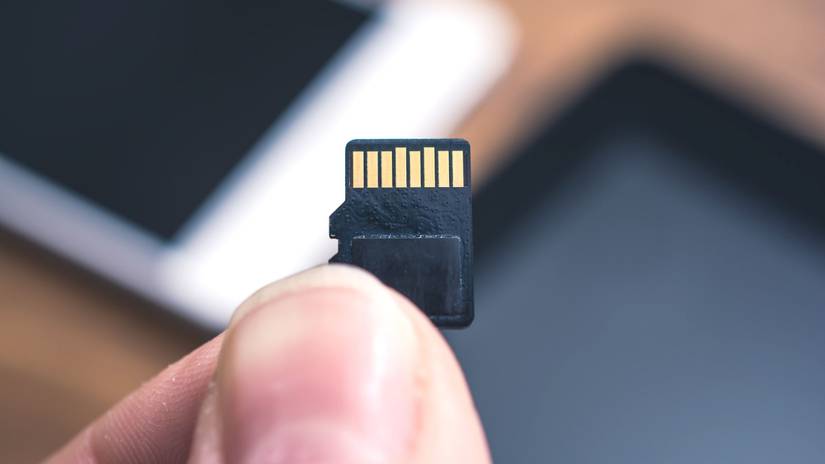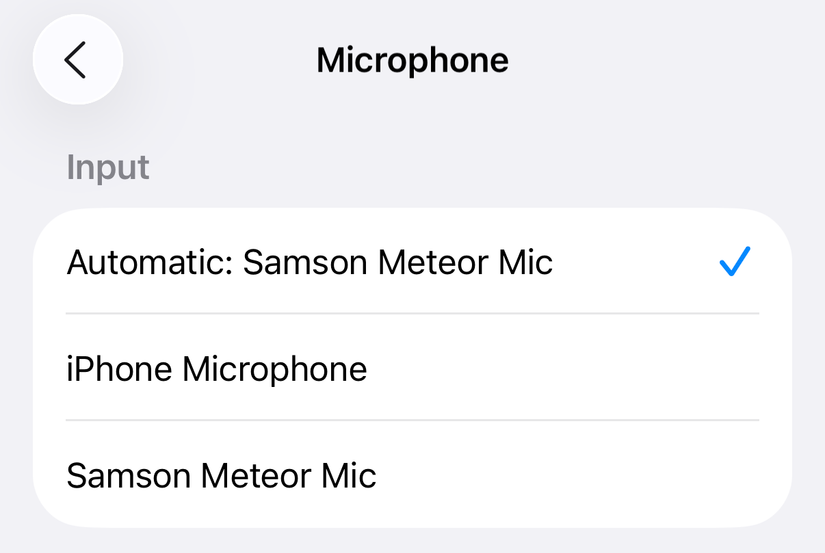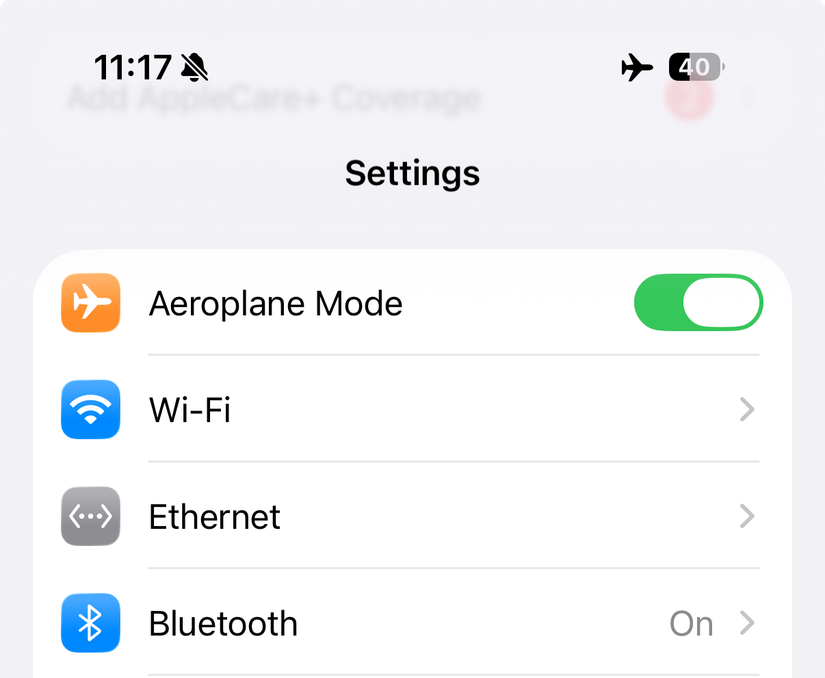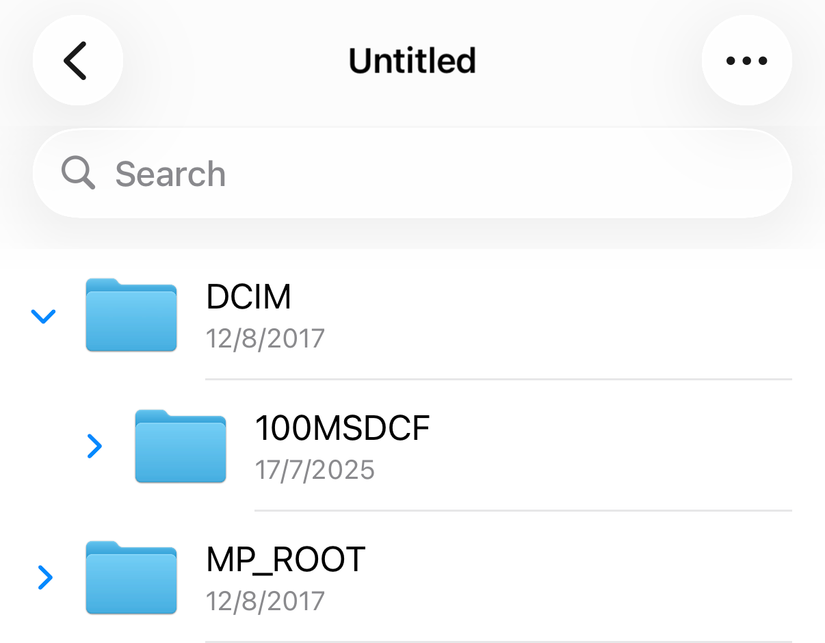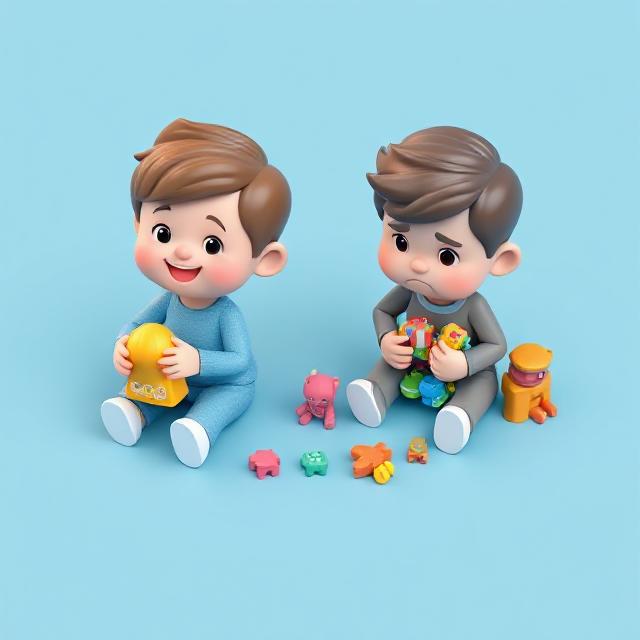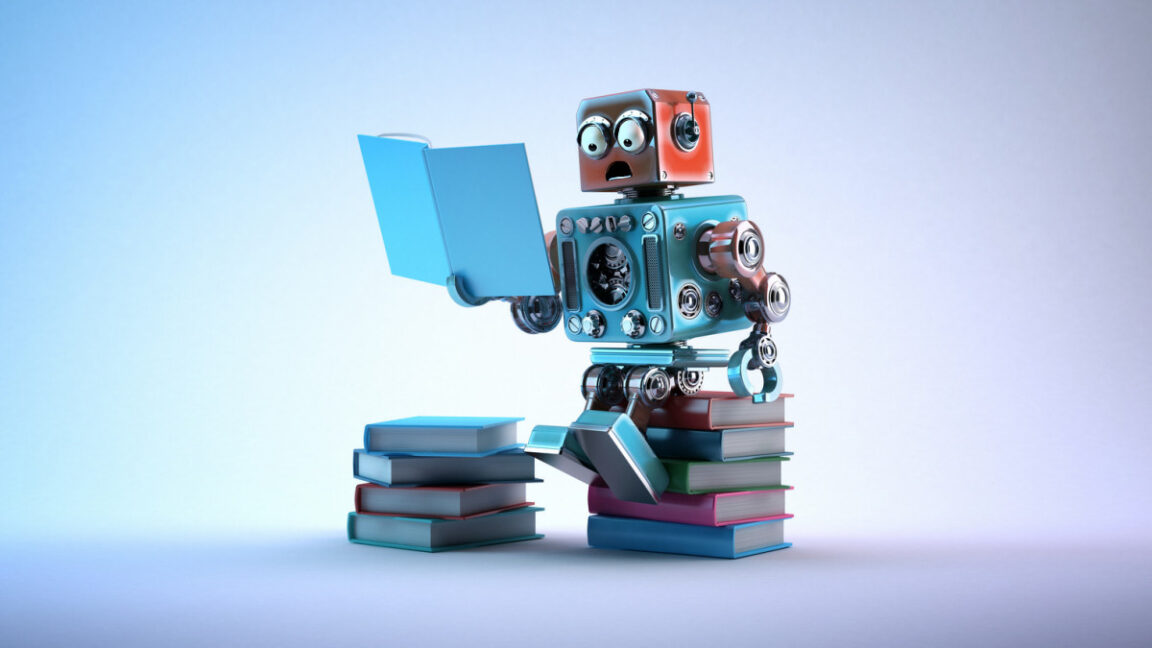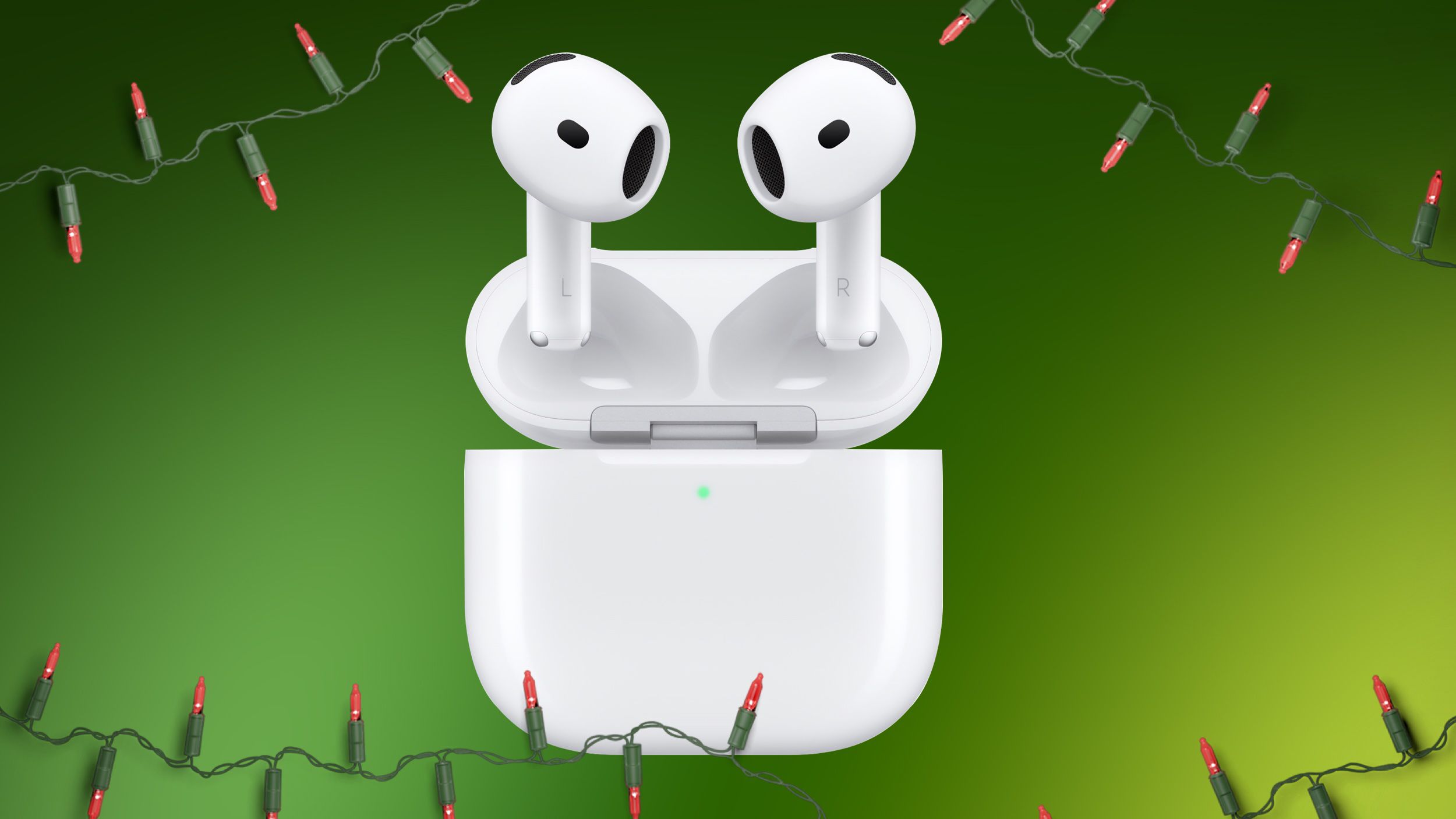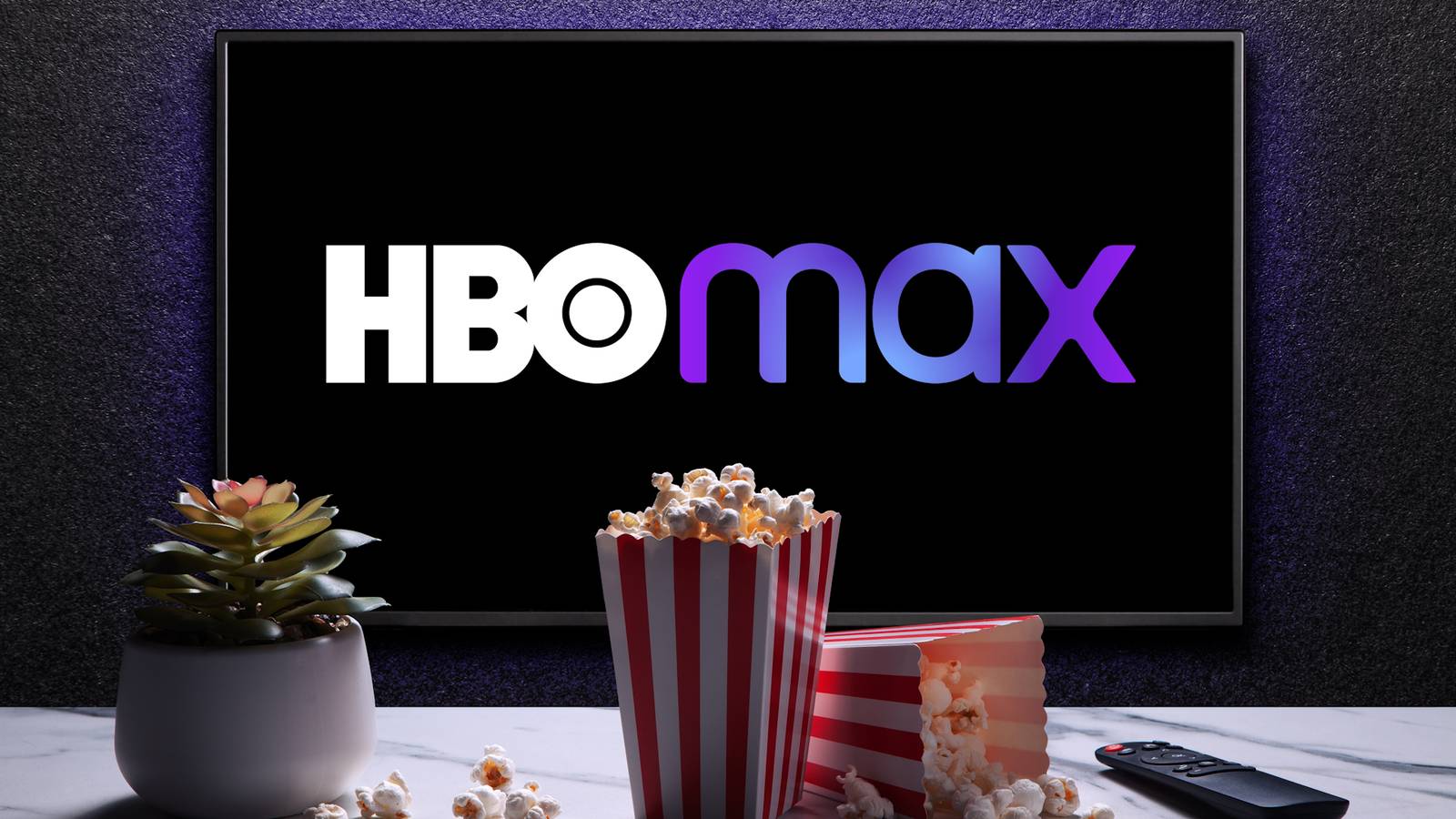Most people just plug a charger into their iPhone’s USB-C port, but the interface is compatible with many more devices. These can help you work or play, get around limitations, and get more done when you don’t have a “proper” computer.
Keyboards, mice and trackpads
You can connect almost any USB input device to your iPhone via USB as long as you have the right cable or adapter. To test this concept, I connected Apple’s Magic Trackpad and Magic Keyboard (both with Lightning ports) using a chain of cables and adapters. I went from Lightning to USB-A, then converted USB-A to USB-C with an adapter and connected it to my iPhone.
They both appeared without any work on my part and I was able to immediately start typing on the keyboard. In order for the mouse pointer to show, I had to enable AssistiveTouch in Settings > Accessibility > Touch. Once this was done, even two-finger scrolling worked as expected. In the past, I’ve connected older Microsoft USB mice and a NuPhy mechanical keyboard with no problems.
Bluetooth is an option if your peripheral supports it, but a wired connection doesn’t mean noticeable latency, and I have a feeling my iPhone was even charging these devices (although neither have an indicator to verify my suspicion). If that’s a problem for you, you might want to use…
USB-C hubs
Virtually any USB-C hub should work with your iPhone and give you a greater variety of ports. This is great if you want to quickly “dock” your iPhone to a variety of devices with a single cable. In addition to this, power hubs that offer pass-through will allow you to charge your iPhone while communicating with other wired devices.
If you’re purchasing a hub specifically for use with iOS (or iPadOS, for that matter), check the item description to see if the iPhone is explicitly supported. If you already have a hub, try connecting it to your iPhone anyway. You can’t do any harm and it will probably just work.
External monitors, televisions and projectors
You can mirror your iPhone screen to an external display using a variety of cables and adapters. The easiest way to do this is to use a cable that allows you to carry a video signal over USB-C, allowing you to use an iPhone with a compatible display (usually a monitor) with nothing more than a double-ended USB-C cable.
Beyond this, there are countless adapters you can use, with USB-C and Lightning versions available. Apple has produced them with HDMI and VGA outputs, and the aforementioned USB-C hubs that also have these video outputs will probably work as well. Just remember that if you have the Lightning version, you’ll need a Lightning to USB-C adapter.
Don’t expect a full iPad or Mac-style desktop to appear. The iPhone will only generate a narrow vertical mirror of what you see on the screen. It’s perfect for demos (and you can always go to landscape mode), but it’s no Samsung DeX.
External drives
You can connect most external drives to your iPhone and access their contents, write files to them, and even format them using the Files app. To be able to read and write, your drive must use APFS, macOS Extended (HFS+), exFAT, FAT32, or FAT as the file system and have a single partition. As expected, Windows NTFS partitions are not supported.
This works with flash drives and larger external drives, including solid state drives (SSDs). iPhone 15 Pro, 16 Pro, and 17 Pro owners can record high-bitrate ProRes video directly to SSD as long as the drive uses exFAT, is connected via a USB 3 cable with a write speed of 10 Gbit/s, and meets the write speed requirements of 220 MB/s and 440 MB/s for 4K60p and 4K120p, respectively.
Fortunately, you can also adapt non-USB-C drives using a simple adapter. Just keep in mind that a USB 3.0 drive connected via a USB 2.0 adapter will be significantly slower as a result of the bottleneck. The drives should appear in the Files app after you have connected them.
Headphones and headphones
Remember when Apple ditched the headphone jack and instead included a small Lightning to 3.5mm headphone adapter with every iPhone? Although the company stopped doing this, you can still use these nifty little converters to connect wired headphones to your iPhone if you want. Apple has a official for $9, but most third-party alternatives should work fine.
These accessories involve much more than simply adapting one connector to another, since it is also necessary to convert the digital signal. That means these adapters have a small digital-to-analog converter (DAC) inside.
Alternatively, you can connect USB headphones and earphones directly to your iPhone. Some gaming headsets use USB-C as their interface, while older models of Apple Earpods that have a Lightning connector will connect just fine with a Lightning to USB-C adapter.
Wired game controllers
The iPhone is compatible with a long list of game controllers, with support for popular options from industry giants like Sony and Microsoft, as well as manufacturers like 8BitDo. Although most of them work via Bluetooth, you can also connect them using a cable that supports data transfer and has the appropriate connectors (or has been adapted using a converter).
For modern controllers like the PlayStation DualSense, this is simple as the controller already has a USB-C port and will connect to your iPhone using the cable Apple provided in the box. Other solutions like the Backbone Pro ($170) connect directly via USB and hold the iPhone in position while playing.
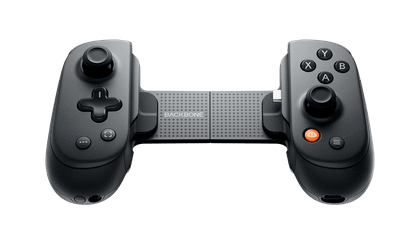
- Wireless?
-
Yeah
- Compatible systems
-
Android phones and iPhone 15 and above
Backbone Pro takes mobile gaming (and more) to the next level of convenience with two full-size joysticks, Hall Effect triggers, and two customizable back buttons for a console-quality experience. You can use it with a USB-C connection or wirelessly with Bluetooth to play on your PC, console, iPad or any other compatible display.
The only downside to going this route is that you won’t be able to play and charge at the same time (unless you use a hub or a device like Backbone, which supports direct charging).
SD and microSD card readers
Most card readers should work fine with your iPhone, and many USB-C hubs already include this functionality. If you have a dedicated card reader, you can try that too. Just remember that the reader won’t appear unless you have a memory card inside.
You can use the Files app to read and write data, or import supported image formats to the Photos app using the “Import” interface that appears whenever you connect external volumes.
USB Microphones
Like USB headphones, USB microphones should work too. I tested this with an old Samson Meteor microphone, which uses a mini USB output. Even after adapting the other end of the USB to Type-C cable to use with my iPhone, the microphone immediately appeared and I was asked if I wanted to start using it.
Your mileage may vary with microphones that require external power.
Ethernet Adapters
It’s hard to imagine many times when you’ll want to connect your iPhone to the Internet via Ethernet, but it can be done. I tested this with a spare Bonelk USB-C to Ethernet adapter I bought to use with my MacBook Pro, but many USB-C hubs should work too.
The lights on the adapter immediately started flashing as soon as I plugged the adapter in, suggesting that the iPhone prefers Ethernet over all other connection types. I was able to continue browsing the web even after turning on airplane mode and turning off Wi-Fi. In addition to this, a new “Ethernet” entry appeared in the main Settings menu under Wi-Fi, something I wasn’t expecting to see.
This could be useful for troubleshooting Wi-Fi issues, connecting to networks you can’t connect to wirelessly, or getting the maximum possible network speeds for file downloads or network storage transfers.
digital cameras
Your iPhone will treat a digital camera like any other external volume, meaning you’ll be able to browse and transfer files, plus import media to your Photos library as soon as the camera is connected. I tested this with my old Sony a6500, which required me to adapt a micro USB to USB-A cable for use with my iPhone’s USB-C input.
The only quirk I noticed is that the camera needed to be turned on for it to function as a storage device.
#connect #iPhones #USBC #port




